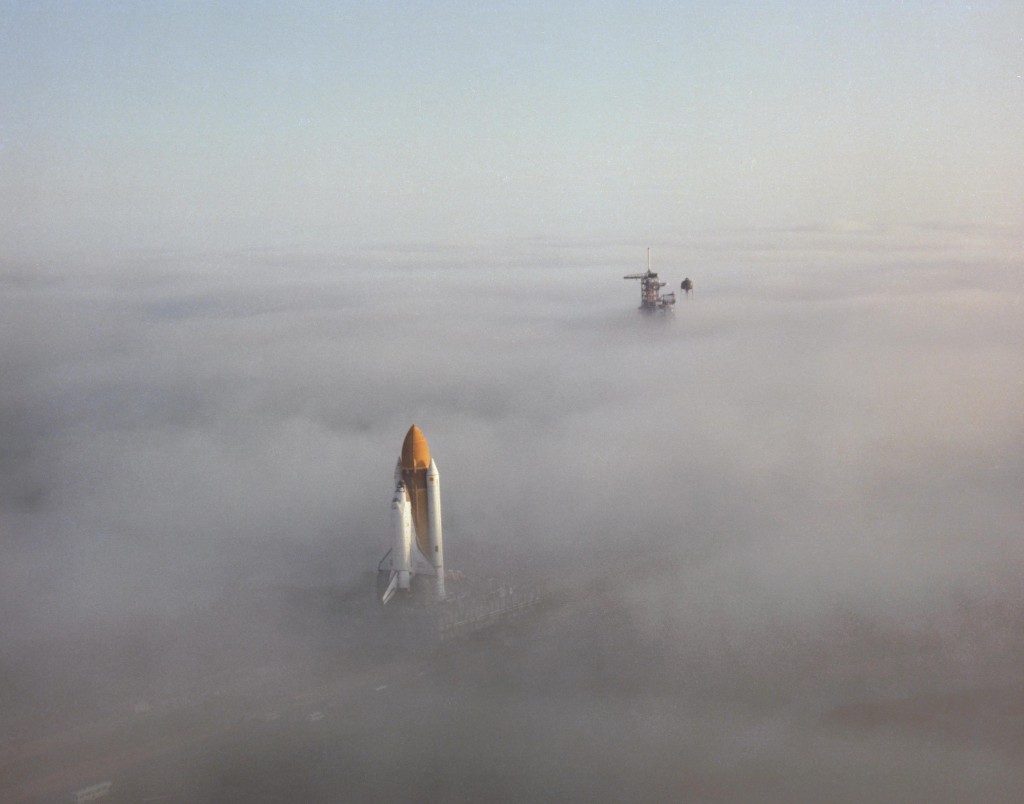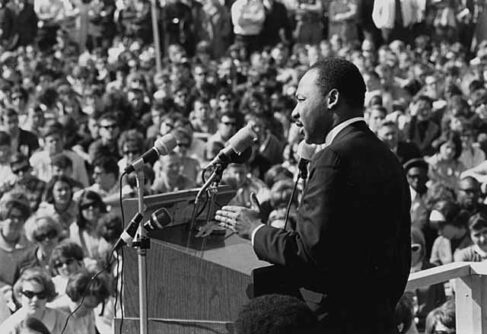This week we’ve been remembering the Challenger tragedy—a tragedy remembered keenly by nearly everyone over the age of 35.
There are many memorable moments from that day—the astronauts waving goodbye as they boarded the shuttle, the Y-shaped cloud left after the explosion, the stricken expressions on the faces of teacher Christa McAuliffe’s parents. But among the most memorable is President Reagan’s moving address to the nation that evening, a speech that ended with lines drawn from John Gillespie Magee Jr.’s poem High Flight. President Reagan’s s were:
We will never forget them, nor the last time we saw them, this morning, as they prepared for their journey and waved goodbye and “slipped the surly bonds of earth” to “touch the face of God.”
That moving speech was penned by Peggy Noonan, then a young speechwriter called upon to deliver a speech on only a few hours’ notice.
Peggy Noonan described the crafting of that speech last year in a forum late last year, and mentioned that she had encountered High Flight in her seventh grade English class, and, that under the great pressure of needing the right words for this grave national occasion, High Flight “just came to me, I just remembered it from seventh grade.”
She was worried that Reagan would not know the poem and so would cut it from the speech. But Reagan knew the poem well—in fact, that poem was engraved on a plaque outside his daughter’s school.
Noonan’s grade school education had equipped her with a stock of literature so that, under great pressure, she could call up from that stock just the right poem to provide the words for this occasion. And you can bet it isn’t just that she happened to learn that one poem, or a few poems—in order to have the right quotation “just come,” one needs a very rich stock of literature in one’s memory on which to draw.
Indeed, Noonan and earlier generations were much better equipped by their schools to have that stock of literature that set them up with intellectual resources to inform and enrich their adult lives.
Noonan encountered High Flight in the seventh grade—but today’s seventh graders are unlikely to be reading such a poem. Annie Holmquist recently wrote how today’s seventh and eight grade English curricula are on a lower reading level, less thematically complex, and tend to have a greater emphasis on recent literature than English seventh and eight grade curricula of the past. How many seventh graders today will be encountering poems like High Flight—or poems by Shakespeare, Wordsworth, Milton, Willa Cather, or T.S. Eliot, or other great works of literature?
There will be more national moments like the Challenger tragedy—and, for each individual, moments of joy, despair, and crisis. Whether national or personal, a store of knowledge of literature helps to provide insight and perspective. Literature can enrich our lives, not merely entertain. But it can only do so when we’ve read enough literature to have a base of knowledge to draw on.
Peggy Noonan’s teachers and school helped her to build up that store of literature—schools today need to do the same for school children.







Bravo! This is one of the best columns on the importance of exposing young people to classic literary works that I have read in a long time. Great story about Peggy Noonan. Well done.